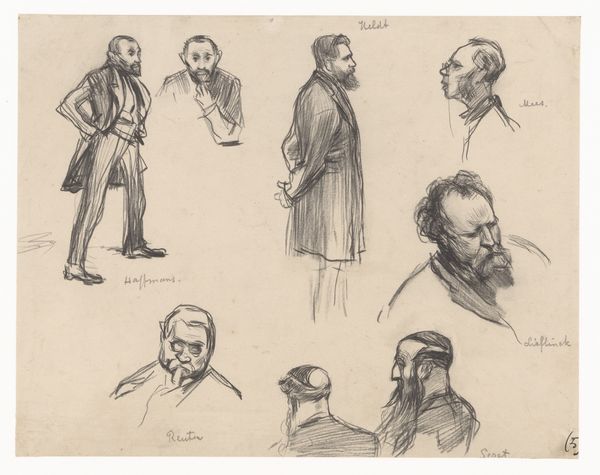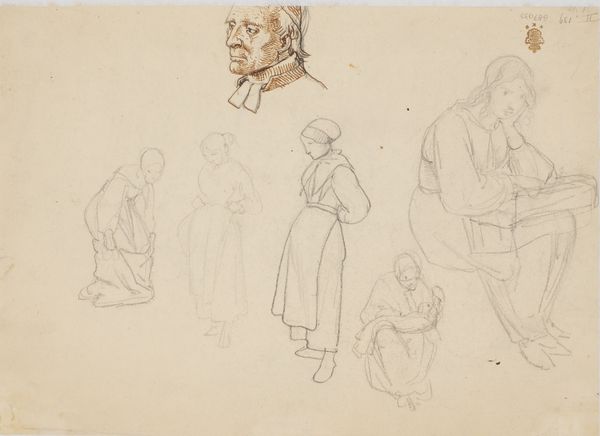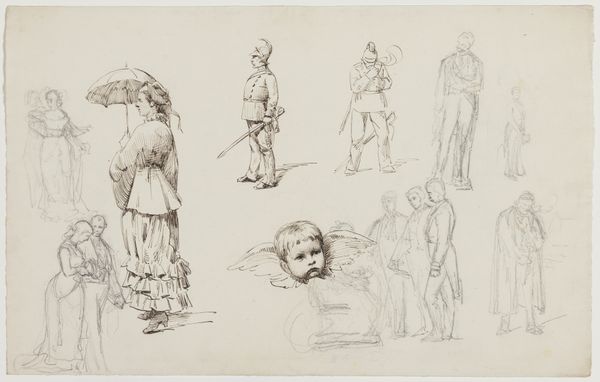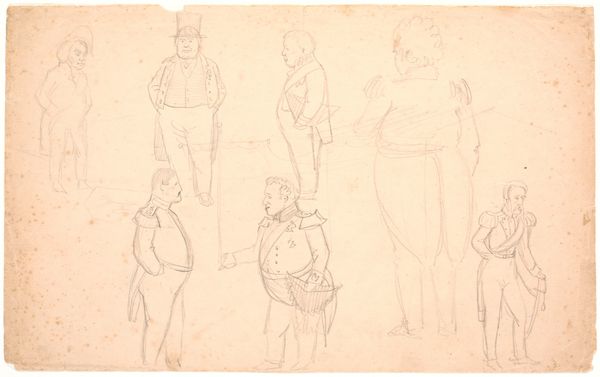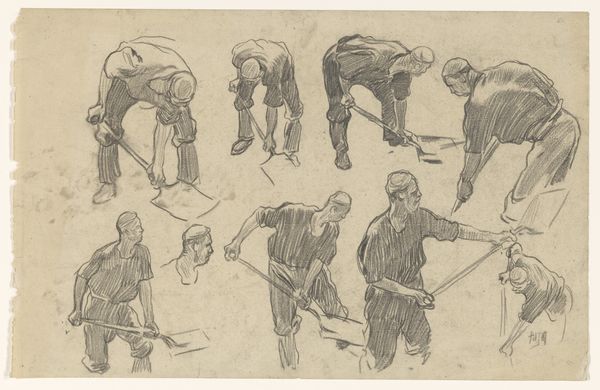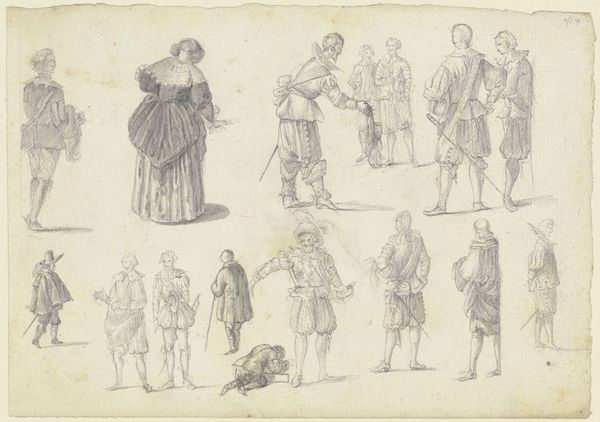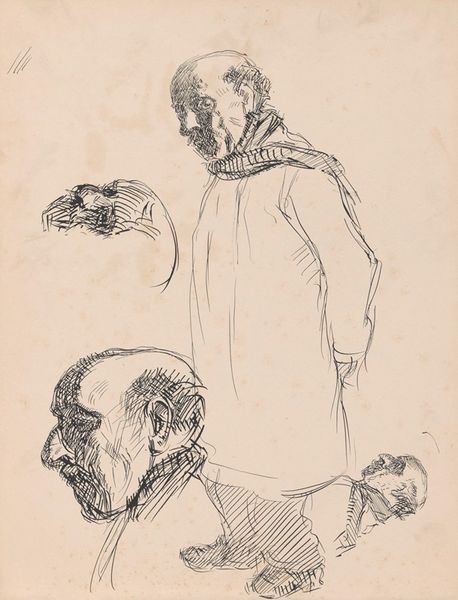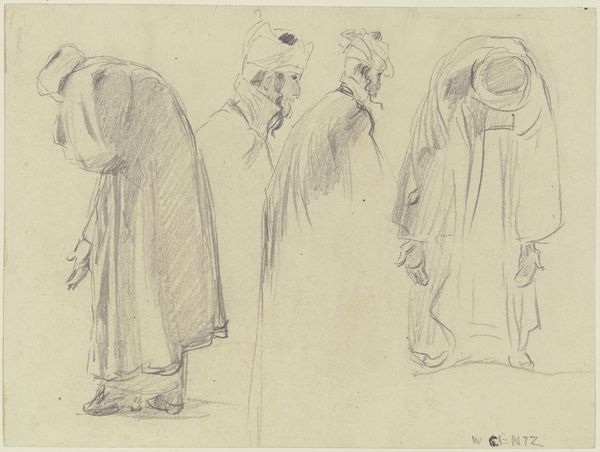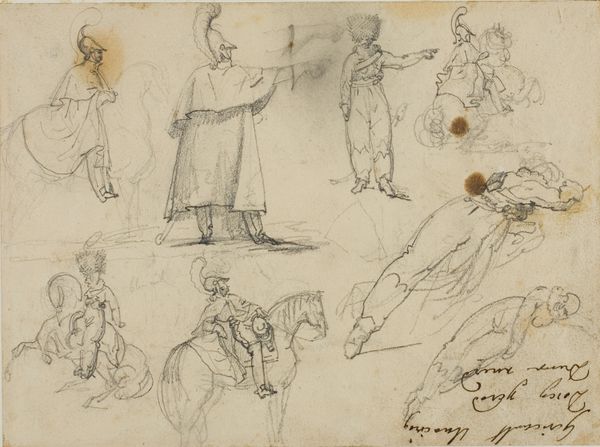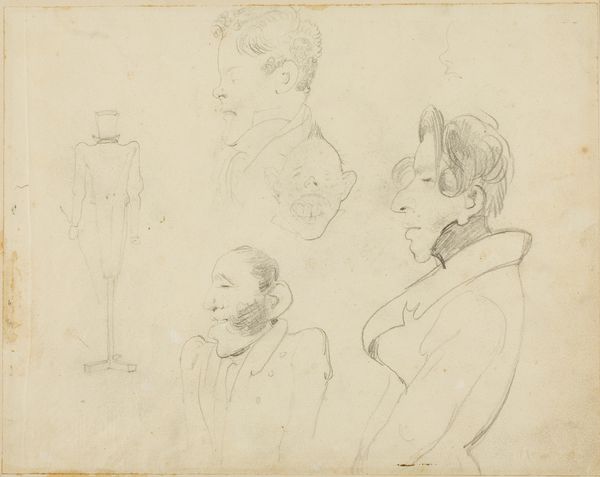
De Tweede Kamerleden A. Buma, G.M. van der Linden en A. Gildemeester 1887
0:00
0:00
pieterdejosselindejong
Rijksmuseum
drawing, pencil
#
portrait
#
drawing
#
imaginative character sketch
#
light pencil work
#
16_19th-century
#
quirky sketch
#
personal sketchbook
#
idea generation sketch
#
sketchwork
#
character sketch
#
group-portraits
#
pencil
#
sketchbook drawing
#
storyboard and sketchbook work
#
academic-art
#
sketchbook art
#
realism
Dimensions: height 130 mm, width 110 mm
Copyright: Rijks Museum: Open Domain
Curator: Looking at these quick sketches, there's a fascinating immediacy, wouldn't you agree? Editor: Absolutely, an array of subjects quickly brought into focus on paper, each figure seemingly captured with great attention. Is it architectural in its concept? Curator: Not at all; what we have here is a page of portrait studies dating back to 1887, "De Tweede Kamerleden A. Buma, G.M. van der Linden en A. Gildemeester" or “Members of Parliament Buma, Van der Linden and Gildemeester" by Pieter de Josselin de Jong. These sketches are pencil on paper, held in the collection of the Rijksmuseum. What stands out is the artist's intent to convey the essence and demeanor of each of the depicted members. What reads out is how power looks like. Editor: Power? It reads more like quiet observation. De Josselin de Jong utilized line and tone quite brilliantly here. Look how a few strokes can define an entire garment, the subtle way the light plays. There is something special to consider with a portrait on its composition, on its scale, how the person is depicted on that period of time. Curator: And notice how the specific features aren't labored over—the artist seems to zero in on posture, clothing, how they carry themselves in their suits, capturing something of their social standing, it speaks volumes of Dutch Parliamentarian culture, what they wore at the time. Editor: Quite right. And how the artist placed figures differently on the plane adds to it, and even strategically names them underneath as a sort of reference. Do you get the impression this was preparatory work? Curator: Definitely. These were studies, probably from a sketchbook—the page bears witness to an evolving understanding of his subjects. It serves both artistic idea and social marker. There's an interesting psychology to observing others, capturing them, in all honesty: it could say how power looks from above. Editor: An intellectual exercise too; the artist’s probing mind captured with speed and skill; but as we see here, how posture can be enough to capture a person’s being is something worth observing. The quick execution, the minimal commitment of marks on paper is also to consider when viewing an artwork as unique as this one. Curator: Yes, it opens a small window into another time, another place, in how one perceived status and individuality, through observation. It’s subtle, insightful, and rather poignant.
Comments
No comments
Be the first to comment and join the conversation on the ultimate creative platform.
